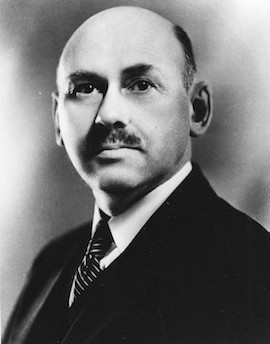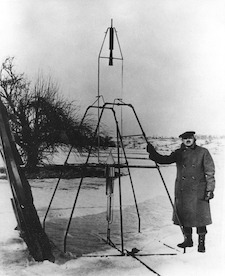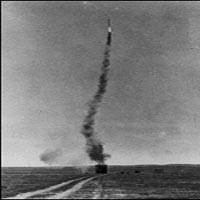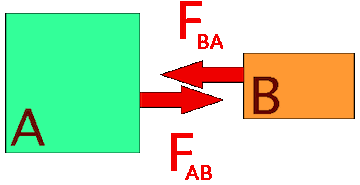Robert Goddard

Claimed by Kashyap Patel (kpatel370)
Dr. Robert H. Goddard (1882-1945) is known as the father of modern rocket propulsion due to his success in discovering that rocket flight is possible using rocket fuel, a mixture of gasoline and liquid oxygen. He not only discovered the unlimited uses of rocket fuel, but also put them to the test in practical situations.
Life
Early Life and School

Robert H. Goddard was born on October 5, 1882 in Worcester, Massachusetts. Early in his childhood, he developed an interest in science. More specifically, the science fiction novel "The War of The Worlds" by H. G. Wells inspired Goddard to delve into the realm of rocket science. After post-secondary school, Goddard attended Worcester Polytechnic Institute and graduated in 1908. Wanting to continue his education, Goddard enrolled in Clark University in his hometown and received a doctorate from there in 1911. Goddard's career had just started as he immediately began teaching physics there.
Adulthood and Career
As he taught physics at his graduate alma mater, he undertook research about rocket flight at his own expense in order to gain grants from various institutions. His research focused on various types of gunpowder that would allow rocket propulsion. His research proved successful when the Smithsonian Institution in 1916 awarded him a $5,000 grant for rocket tests. Goddard started defining industry standards when, in his 1920 report, he claimed that it was possible for a rocket to reach the moon. Goddard added that inn order to makes its arrival, the rocket would would explode a pile of flash powder. Goddard continued to research on his own and in 1926, surprised the world by constructing and successfully testing the first rocket using liquid fuel. His discoveries were later used in the military when he was recruited by the U.S. Navy in developing jet-assisted takeoff during World War II. Goddard later died on August 10, 1945 due to throat cancer.
Achievements
- Dr. Goddard is considered to be the father of modern rocket propulsion.

- He is considered to be the man who ushered in the Space Age.
- He developed and demonstrated the basic of idea of the bazooka, an anti-tank weapon, in 1918.
- The bazooka was later used in World War II.
- He constructed and tested the first ever rocket using liquid fuel in 1926.
- This first ever liquid-fueled rocket burned for 20 seconds before taking off, traveled 41 feet upwards in 2.5 seconds, and came crashing to the ground at 60 miles per hour.
- Goddard proved that a rocket does, infant, work in a vacuum; air is not required to push against.
- Because of his discovery of rocket fuel, Goddard told the world that space travel was possible.
Connectedness
Up until now, you may be wondering how Robert Goddard is connected to the content you learned in physics class.
Robert Goddard discovered something very important: rockets, powered by rocket fuel,

will work in a vacuum; they don't need to push against air to move forward.
Goddard didn't come upon this realization from thin air, however; he applied Newton's Third Law of Motion to space travel after reading his Principia Mathematica.
Statement
Newton's Third Law of Motion states that for every action, there is an equal and opposite reaction.
While this statement may not seem too important, it has been used almost everywhere in physics, including in the units we have learned.
Better explained, for every interaction, there is a pair of forces acting on the two objects that are interacting.

The size of the force on the first object equals the size of the force of the second object. Additionally, the direction of the force on the first object is opposite of the direction of the force on the second object.
Example 1
For example, consider a car driving on a highway, and a bug comes from the opposite direction and splatters on the windshield. As a result, an interaction has taken place between the car and the bug: the bug hit the car and the car hit the bug. Which of the two forces is greater: the force on the bug or the force on car?
You would think that the force on the bug is much bigger since the car is much heavier than the bug, right?
Actually, this is a trick question because the force on the bug is equal to the force on the car, as stated above!
Example 2
Here is a Goddard-related question about interactive forces.
Before Goddard came along, space travel was believed to be impossible because nothing proved that rockets could move forward in space. Why did people think that rockets couldn't propel forward in space?
A) Space is a vacuum (devoid of air) so rockets have nothing to push off of. B) Gravity is absent in space. C) Space is void of air and so there is no air resistance in space. D) The other options are wrong. Rockets do accelerate in space and have been able to do so for a long time.
If you hadn't guessed it by now, the correct answer is D, and you should know that from reading about Goddard and Newton's Third Law of Motion!
Trivia
- If you ask Robert Goddard about his field and he doesn't know the answer, you could say "This isn't rocket science. Oh wait, it is!"
- In the Nickelodeon show The Adventures of Jimmy Neutron: Boy Genius, Jimmy's robot pet dog, Goddard, is named after Robert Goddard.
That is all I wanted to say. Have a great Winter break!
References
Robert Goddard: American Father of Rocketry
Dr. Robert H. Goddard, American Rocketry Pioneer